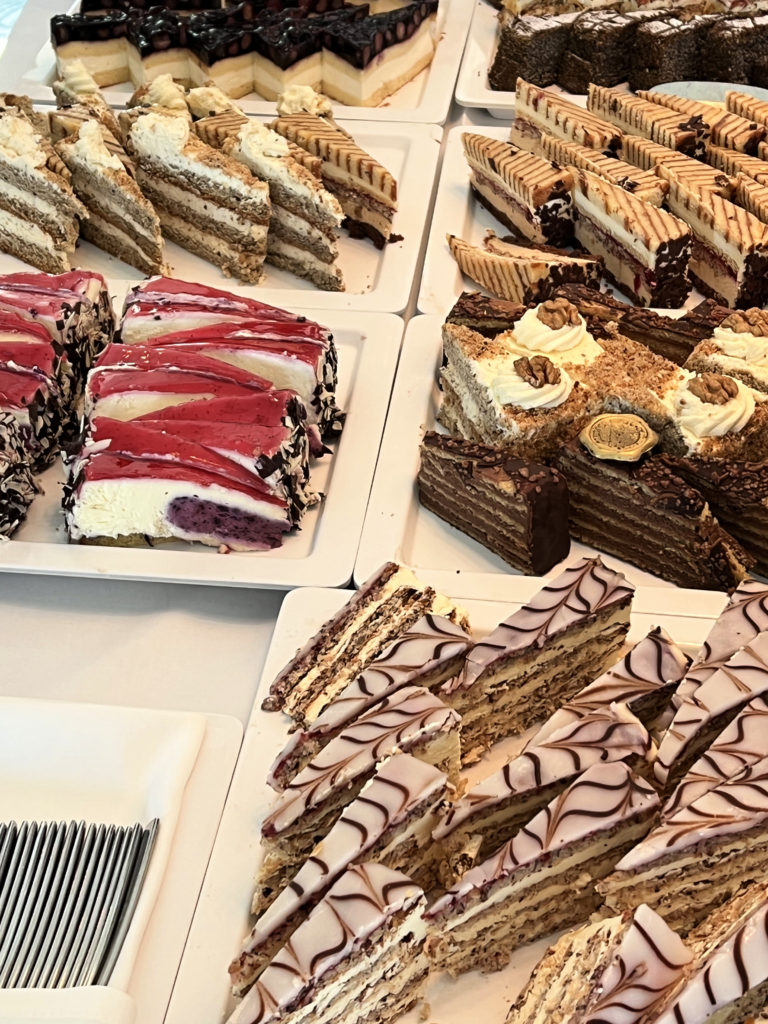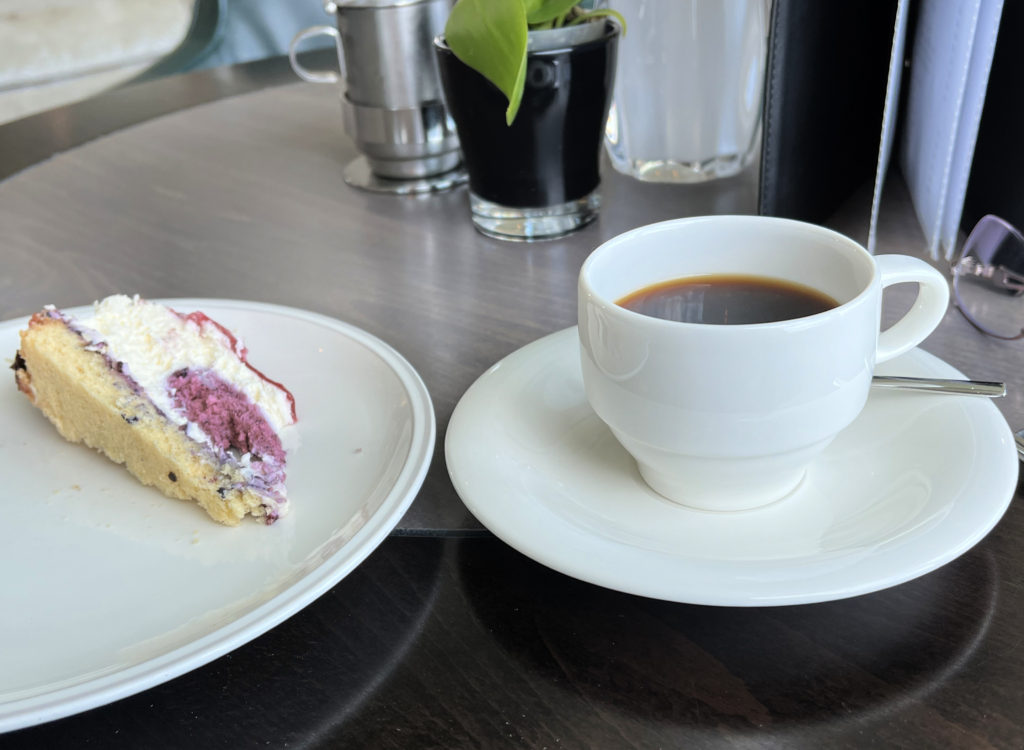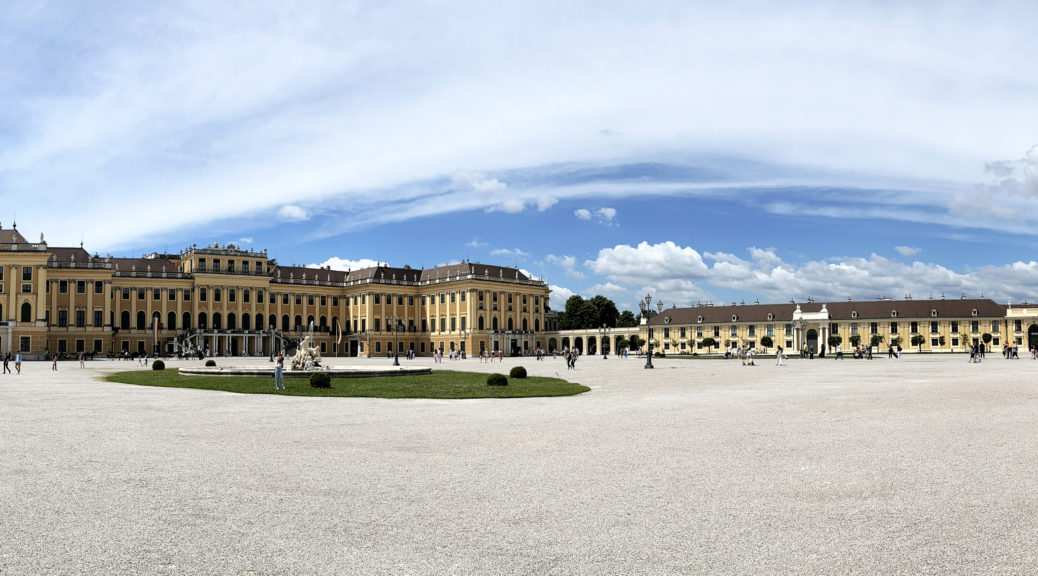
Schönbrunn Palace in Vienna
On our second day in Vienna, we toured the Schönbrunn Palace. Together with the Hofburg, the Schönbrunn Palace is the other major palace in Vienna. The Schönbrunn Palace and its associated buildings, gardens, fountains and statues are a UNESCO World Heritage Site.
The Schönbrunn’s history extends back to Middle Ages. In 1569, Maximilian II acquired it for the Habsburg Dynasty. Emperor Matthias used it for hunting and, while hunting, discovered a “fair spring” which in German is translated “schoner brunnnen” which is how the Schönbrunn Palace got its name. Palace re-decorating and the design of the gardens was undertaken in the 1700s at the direction of Empress Maria Theresa. After her passing, the palace was unoccupied until the 19th Century when Emperor Franz II used it as his summer residence. Today the palace and grounds are owned by the government of Austria.
We were unable to take pictures inside, but I purchased a picture of the Great Gallery. The room was created between 1755 and 1761 and was used as a ballroom, banquet hall and an antechamber where visitors waited for an audience with the emperor or empress. Since Austria became a republic, it has been used for concerts and receptions. On June 3, 1961, President John Kennedy famously met with Russian Premier Nikita Khrushchev in this very room.
The Great Gallery is an incredible room, 141 long and 32 feet wide. It was originally lit by candles, but in 1901, they were replaced by 1,104 lightbulbs. The Great Gallery was decorated with gold and white stucco, tall crystal mirrors and beautiful ceiling frescoes.
The ceiling frescoes by the Italian artist Guglielmi are allegories which make obvious reference to the political, military and economic situation of the times. For the first time real persons such as the imperial couple are incorporated into the composition…The central fresco dating to 1760 represents the prosperity of the monarch under the rule of Maria Theresa, who is enthroned at the center with Franz Stephan.
Schönbrunn Palace: Guide to the Palace, Revised 2019

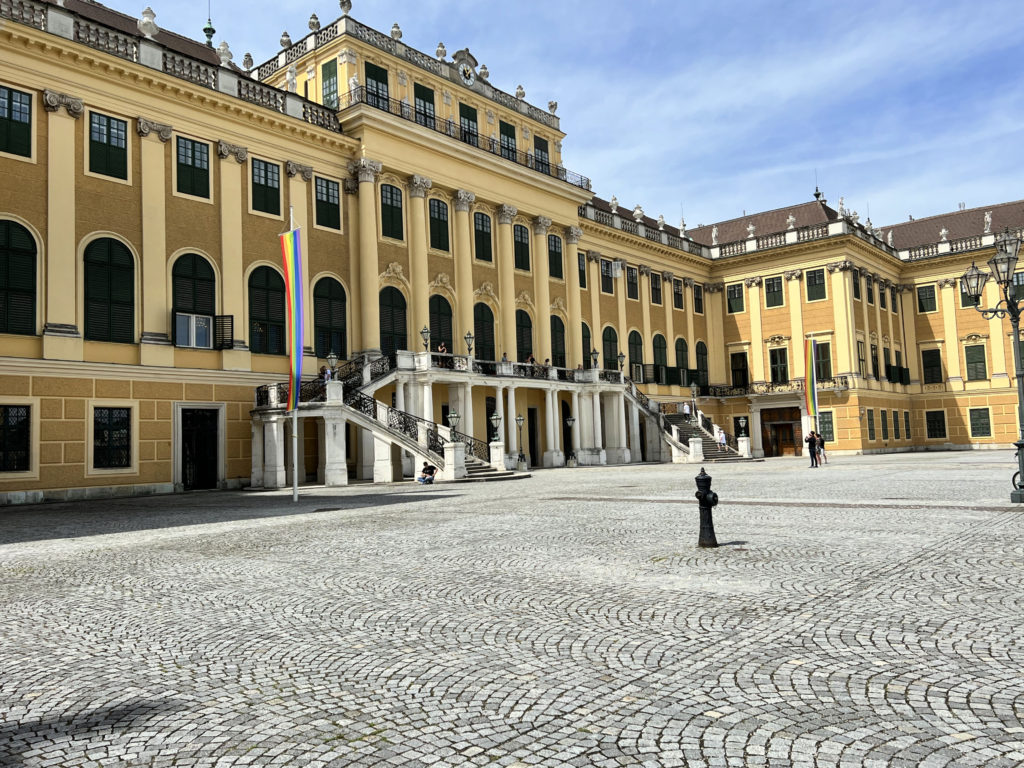
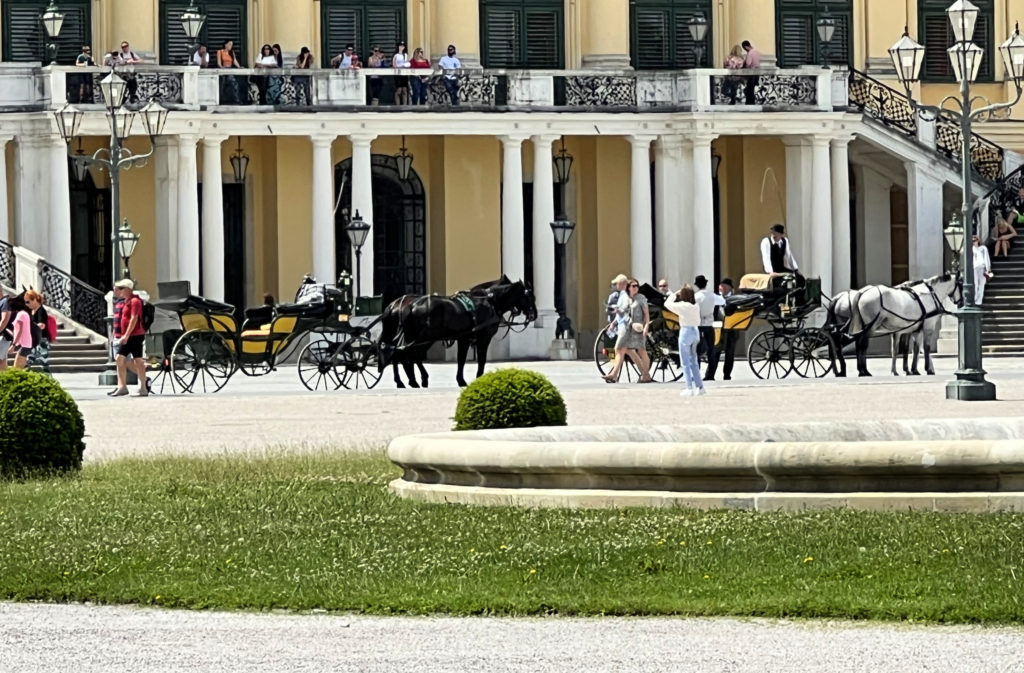
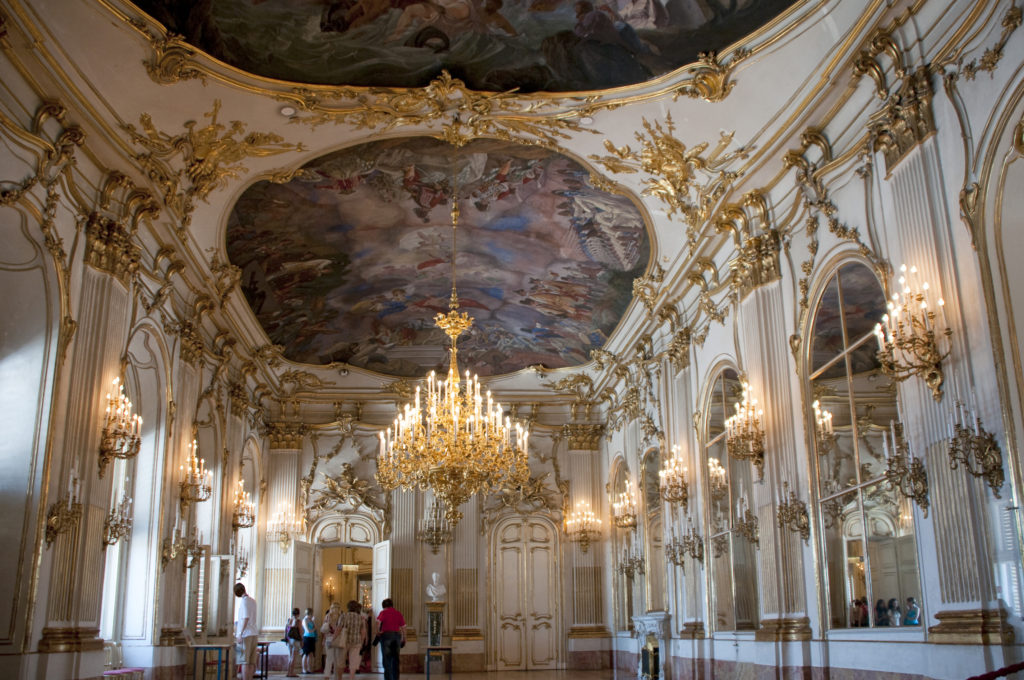
The large area in front of the Schönbrunn Palace is called the Parade Court. The first picture below is taken near the entrance to the complex looking at the palace. The second picture was taken near the palace, looking back toward the entrance. There are two fountains in Parade Court. The one on the east side of the Court represents Galicia, Lodomeria and Transylvania (today they are part of Poland, Ukraine and Romania). These were acquired by the Habsburg Monarchy in 1772. The fountain on the west side of Parade Court represents the Danube, Inn and Enns Rivers. Both the Inn and Enns are tributaries of the Danube.

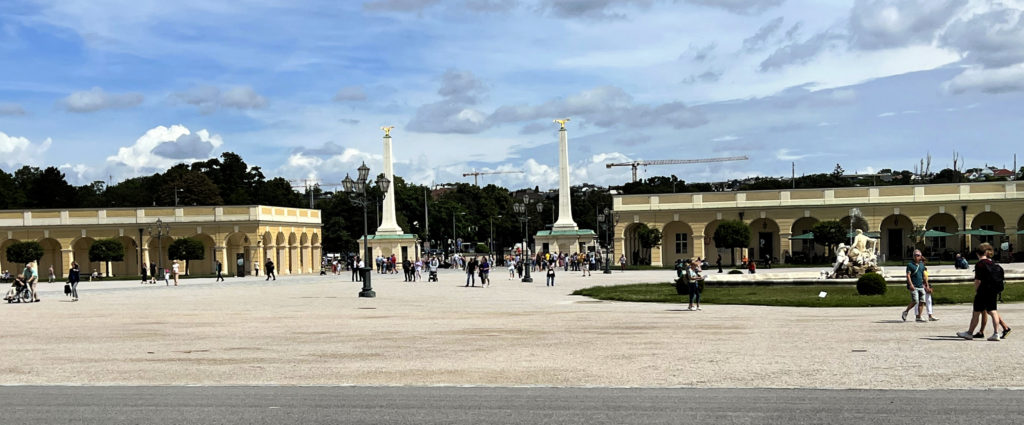
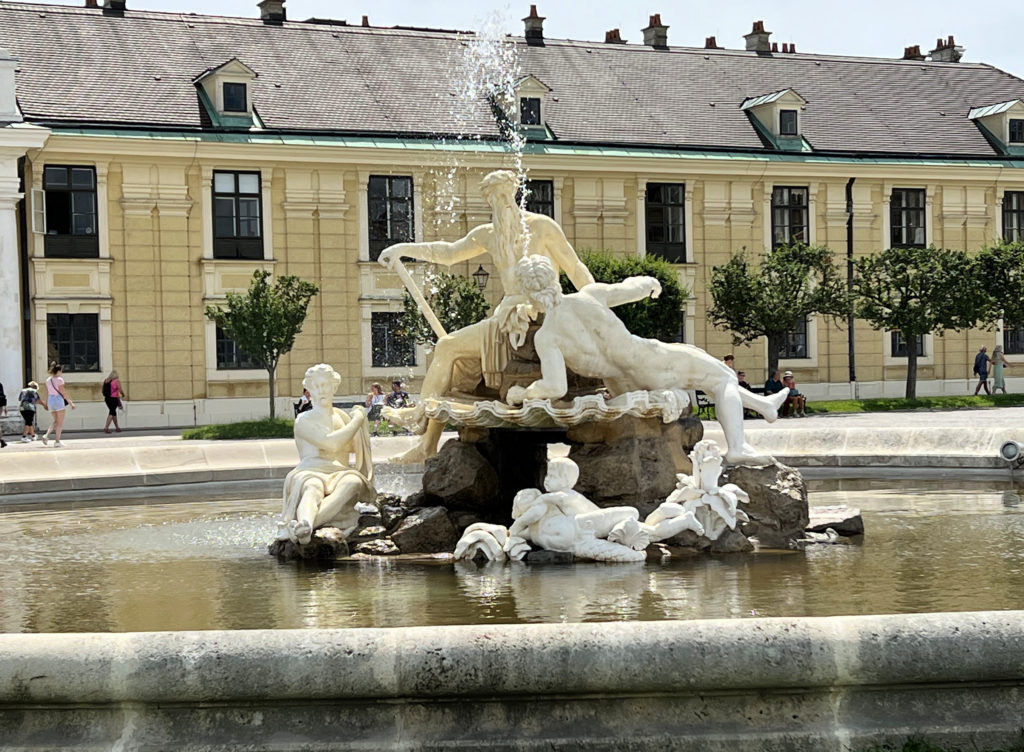

These pictures are part of the gardens at Schönbrunn Palace. We only walked to the area closest to the palace – there was much more to see – so much so that we have booked another trip that will include a return to Vienna.
The first picture below is in the Hietzinger Privy Gardens, the private garden of Emperor Franz Joseph. The statue is of Diana, the goddess of wild animals and the hunt. It was sculpted by Johann Wilhelm Beyer. Empress Maria Theresa contracted with him in 1773 to sculpt several pieces for the gardens at the Schönbrunn Palace. His work at the Palace was considered his greatest accomplishment.
As we walked, we saw beautiful flowers and a trellis with greenery. There were benches where we could sit and enjoy the gardens. The last picture in this section is of the Gloriette. Its central section is similar to a triumphal arch. An imperial eagle sits atop the Gloriette on a globe. There are semi-circular arches to each side of the central section. The flat roof was used as a viewing platform beginning in the early 1800s and is still accessible by a stairway. We did not see the Gloriette on this trip, but will make it a priority when we visit again next year.

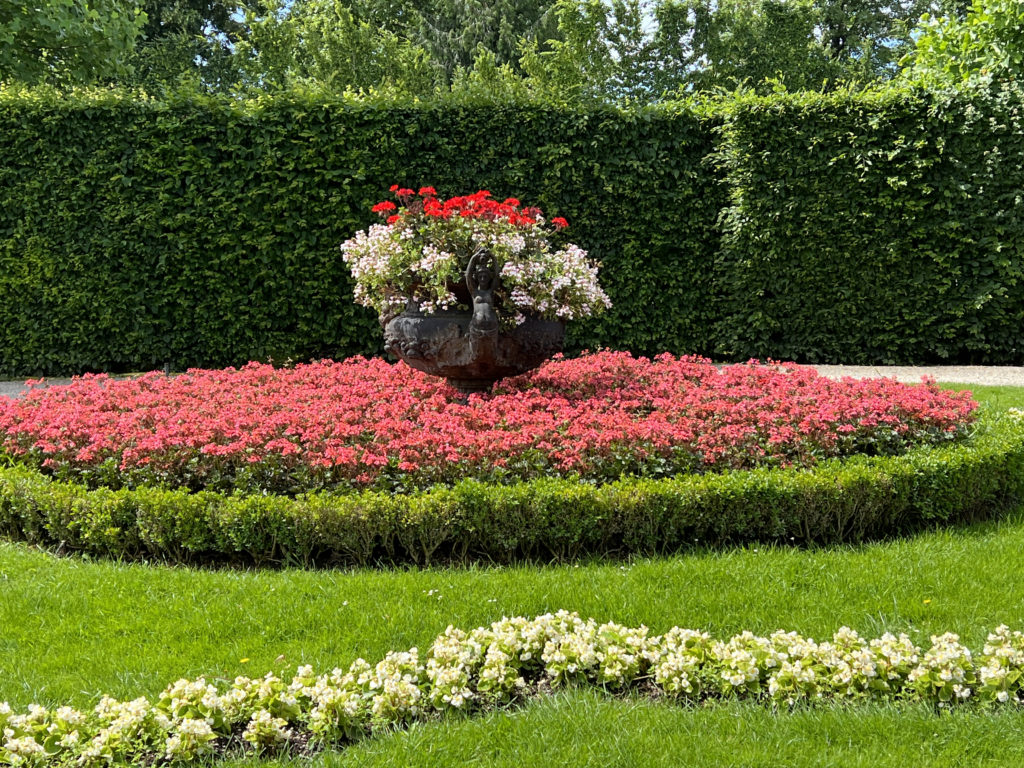
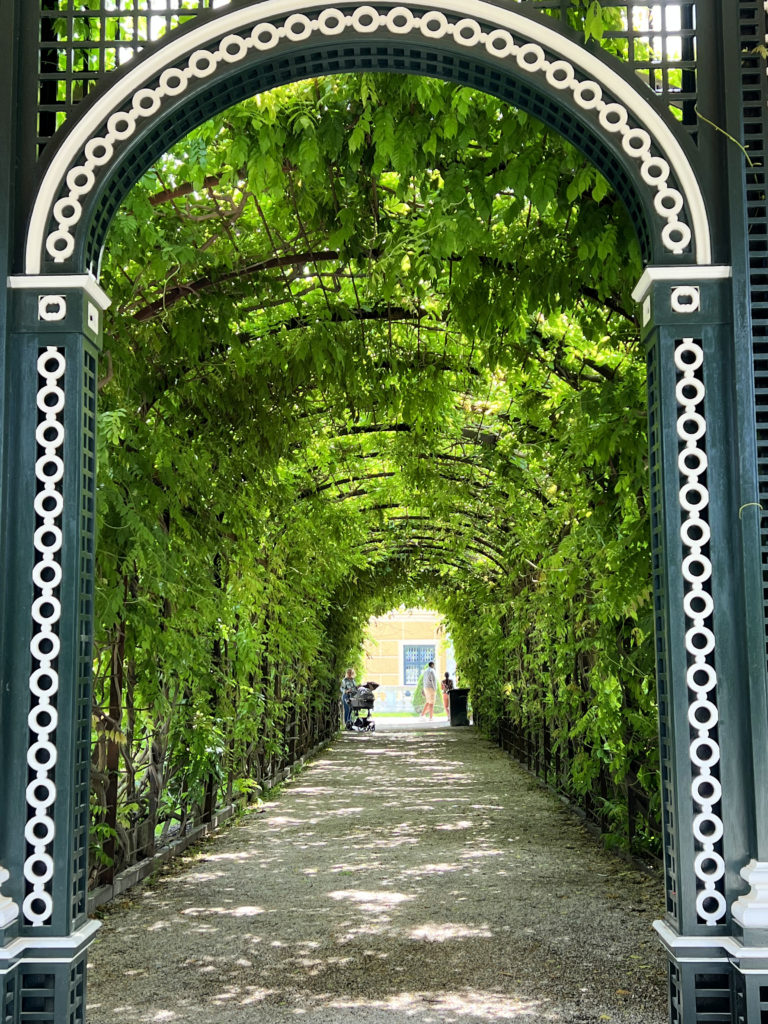
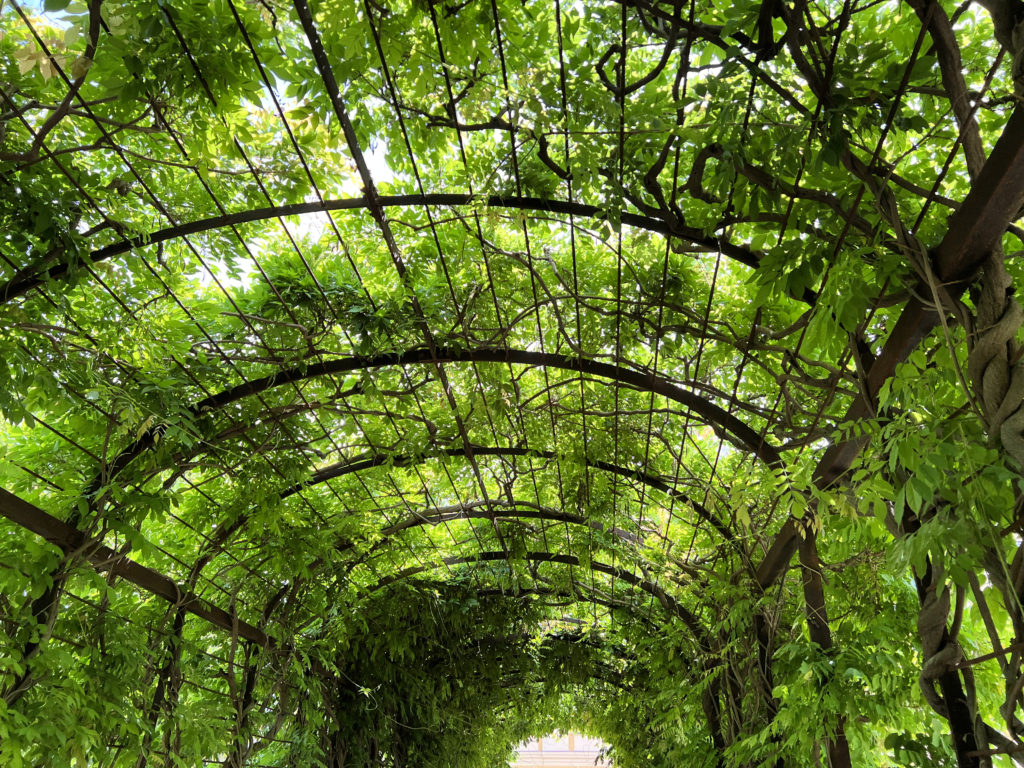

The people of Vienna love spending time in coffee houses. When we did our walking tour of Vienna, we saw long lines of people waiting to get into them. Coffee houses are such an important part of life in Vienna that UNESCO includes them on their list of intangible cultural heritage. UNESCO describes them as places “where time and space are consumed, but only the coffee is found on the bill.” Our tour directors brought some of the cakes served in the coffee houses to our riverboat where we could enjoy the cakes with coffee.
